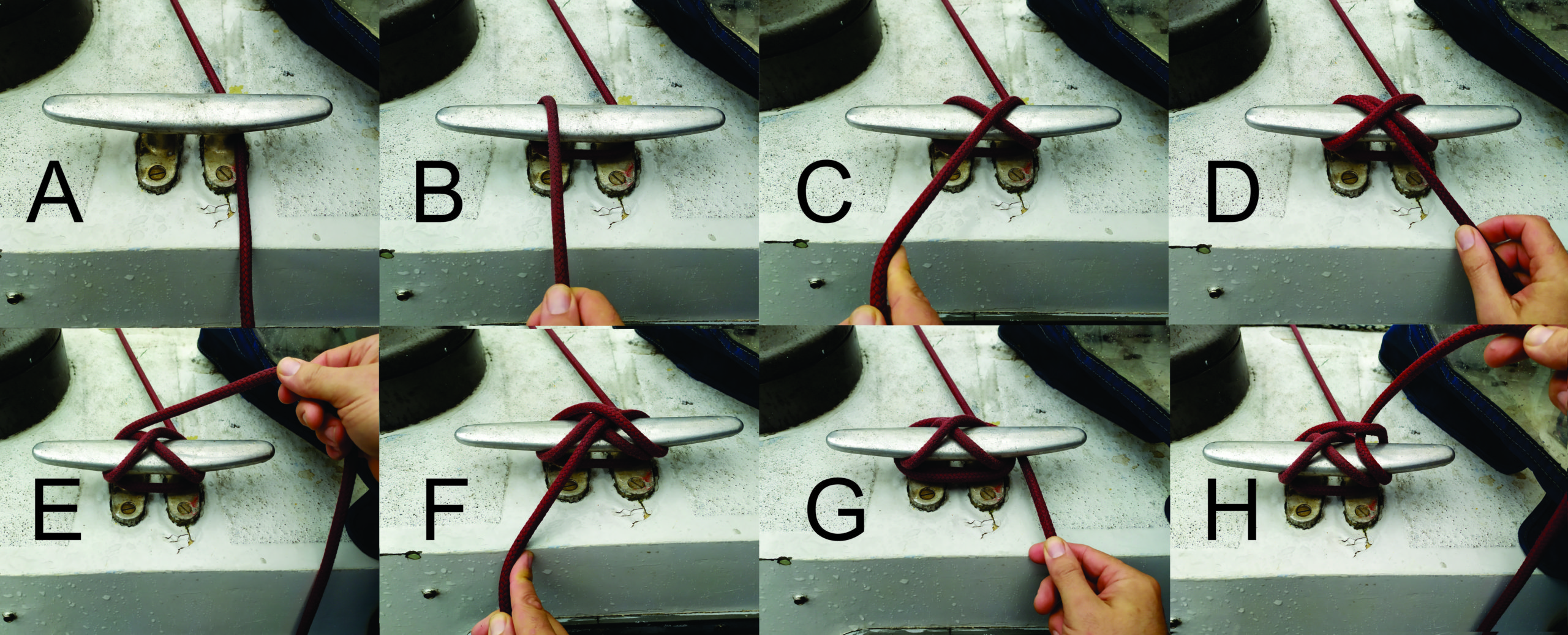Cleats = Good. Proper Use = Even better!
Properly installed horn cleats are some of the most important pieces of gear that we have aboard our boats. And it’s also imperative to know how to use them them properly. You’d be surprised how many poorly-tied and misused cleats there are in the world! Once you get your new or old cleat installed aboard (see the January issue of 48° North for how to do that), how should you use it? First off, get the line on the cleat!
There should always be something the line is on between you and a load—such as a winch or cleat—to allow you to belay it. If you are trying to hold onto a boat with a dock line, having it around a cleat gives you great advantage. Otherwise, all you have is the traction of your feet and the boat gets to use you as a 3- to 4-foot lever if you are standing upright.
Put one turn of the line on a cleat and you can hold almost anything. Then, you can pull the line in or ease it out as needed to be under control. And once you have the line where you want it, you can secure it with a cleat hitch.
Tying a Cleat Hitch
To tie a cleat hitch, take the working end of the line (the end that goes to slack, not the standing end that goes to the load) to the far horn on the cleat. Next, go around both horns. Then start a figure eight, and lock it by passing the working end under itself (see image below).

One thing to think about when tying a line on a cleat is leaving room for another line on the cleat. However, the most important consideration is being able to untie it. In keeping with both these points, it is important not to take excessive turns around the cleat or to lock it more than once. In 50-plus years of sailing and living on boats, we have never had “far horn, both horns, full figure eight, and lock it” fail. So, you genuinely don’t need more than that (see “F” in the image above). Only once have we had a hitch with even a partial figure-eight fail (see “D” in the image above). In this case, some new dock lines slipped free of the mooring at Ivar’s Salmon House on Lake Union. The lines were double braid and fairly small, about 1/4”. The lines slipped and our normal cleating process failed! All ended well and we got the boat back with nothing more than one set of wet clothes and a good story. However, we learned the following lesson: if the line is new, slippery, double braid, and small, make a full figure eight before locking it.
No Hitch at All?
For working lines where getting the line off quickly is even more important, such as with a headsail sheet, don’t even lock it. Do just far horn, both horns, full figure eight and once around the base. It is worth noting that the Coast Guard no longer locks cleat hitches for any reason because of an incident involving ice where they couldn’t get the line off the cleat that had a lock as part of the knot. Now they use many figure eight loops around both horns to tie off lines. The Washington ferries use the same method for their dock lines, as do we when taking someone up the mast. For more on how to deal with dock lines, please refer to our article “Dock or Docking Lines” from the September 2014 issue of 48° North.
If It Looks Good, It Usually Works Well
Go down almost any dock and you will see great inventiveness and excess in the manner people secure lines on cleats: lock after lock back and forth on both horns completely filling the cleat; locks across the lay of the line on the cleat that are not just unsightly but can make untying them quickly impossible.
The cleat may be the most important hardware we use while sailing, or, at least the one we use to tame lines the most. So, it is important that we understand them and how to use them well. The four most important qualities of a knot:
- Easy to tie
- Easy to untie
- Secure
- And, of course, it should look good.
The tendency is to get fixated on 3 and forget the most important ones—1 and 2—to say nothing of 4.
Getting out and tacking back and forth will give you plenty of practice tying and untying cleat hitches if your sheets are rigged to horn cleats. But to get out there, you must first untie the ones holding you to the dock…
Alex Wilken
Alex Wilken and his father, Jack, are lifelong cruisers, professional shipwrights, USCG licensed captains, and the owners of Seattle Boat Works.






